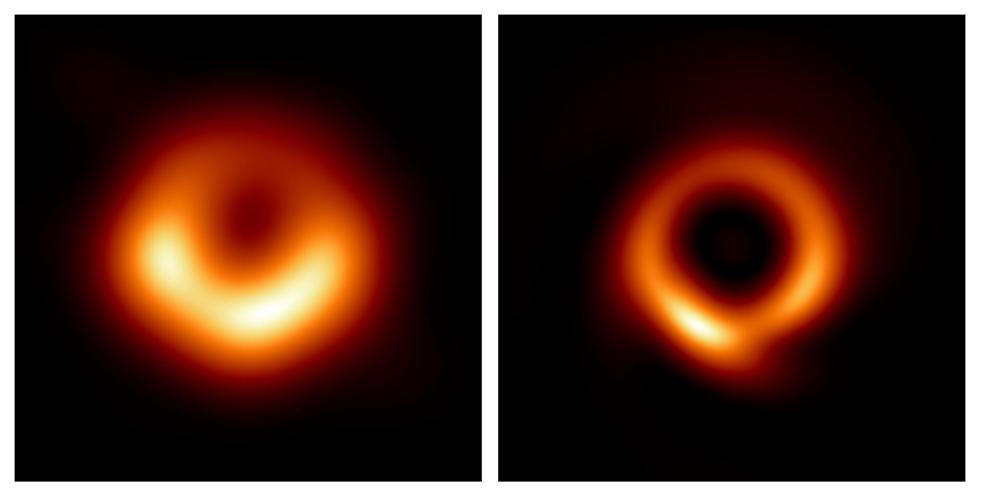Astronomy’s famous orange bagel now resembles a menacing ring of fire, thanks to a new imaging technique that could help researchers learn more about black holes.
A team with Tucson ties developed the new technique, known as PRIMO for short, to produce a full-resolution version of the first picture ever captured of a black hole.
The historic, original image made headlines around the world in 2019, despite looking like a fuzzy round blob with a small dark center.
The improved picture, unveiled on Thursday, shows the same supermassive black hole 54 million light years from Earth, but the glowing, orange halo is much more defined, and so is the black circle in the middle of it.
“We turned the donut into an onion ring,” said Tucson-based astronomer Tod Lauer, borrowing a joke he heard from someone else.
Both images were made from the same data gathered in 2017 by the Event Horizon Telescope, a worldwide network of eight radio observatories, including two affiliated with the University of Arizona: the Submillimeter Telescope on Mount Graham and the South Pole Telescope in Antarctica.
The difference in the two pictures is because of PRIMO, which stands for principal-component interferometric modeling. The process uses a complex algorithm and a type of machine learning that teaches computers to fill in the missing information in a picture by sifting through tens of thousands of simulated images based on what we know about black holes.
The result is a highly accurate representation of the actual observations from the Event Horizon Telescope blended with a high-fidelity estimate of the image’s missing structure.
“This image beautifully matches the data. That means it can’t be far wrong,” Lauer said.
Sharpening the picture should help refine what researchers know about M87, one of the largest black holes in the known universe that is roughly the size of our entire solar system.
The size of the orange ring, for example, can be used to determine the mass of the black hole as it chews its way through its host galaxy, Messier 87, in the constellation Virgo.
“Since we cannot study black holes up close, the detail in an image plays a critical role in our ability to understand its behavior,” said Event Horizon Telescope team member Lia Medeiros, who is leading the new imaging effort. “The width of the ring in the image is now smaller by about a factor of two, which will be a powerful constraint for our theoretical models and tests of gravity.”
The team that developed PRIMO includes Medeiros at the Institute for Advanced Study in Princeton, N.J., astrophysicists Feryal Ozel and Dimitrios Psaltis at Georgia Tech, and Lauer, who works for the National Science Foundation’s National Optical Infrared Astronomy Research Lab in Tucson.
Medeiros, Ozel and Psaltis all used to work at the University of Arizona and have been involved in several recent milestones in black hole research, including the first images captured of M87 and Sagittarius A, the black hole at the center of our Milky Way galaxy.
They describe their latest work in a paper just published in The Astrophysical Journal Letters.
Lauer said the phrase “machine learning” conjures sci-fi images of artificial intelligence, but PRIMO uses a much more structured, input-driven process.
“We are not stuffing images into ChatGPT and checking back the next day to see what it came up with,” he said.
The new technique is already being used to help produce a sharper picture of Sagittarius A than the one unveiled last year.
Lauer said PRIMO should also help “on the front end” of the observation process, as other black holes are studied and more radio observatories around the globe — including the UA’s 12-meter Telescope on Kitt Peak — are added to the Event Horizon Telescope network to improve its capabilities.
“We think this is a tool to be used,” he said. “We’re waiting on the application.”
The new imaging technique was developed by a team with Tucson ties.





